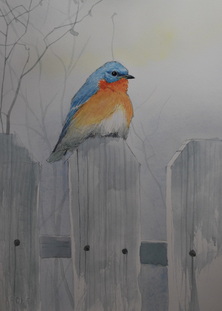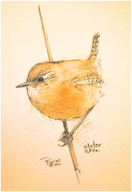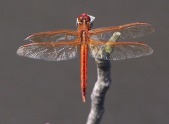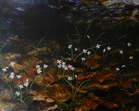| Kurt Plinke, Artist and Naturalist |
Between the Waters
life, Art and The Nature of things Between the Atlantic and the Chesapeake
 It is Christmas morning, and the weather is warm here in Greensboro. At almost sixty degrees outside, the air is practically balmy for a late December day on Maryland's eastern shore. A few days ago we were thinking it might snow as we gathered around the wood stove to stay warm. Then the wind shifted, the rain fell for days (thanks that it was rain and not snow), and now we are enjoying a windy, spring-feeling day. It almost doesn't seem like Christmas. Looking through the window this morning, I saw seven bluebirds, perched all in a row along the picket fence out back. The damp gray wood was a suitable match for the blues, pale grays and reds of these striking little birds. As I stepped out the back door to try to photograph the perfect little line of brightly colored birds, they scattered, flashing cerulean and sapphire. Their glittering wings lifting them all to various points on nearby bare branches. Even their calls reminded me less of Christmas and more of Spring, when their song can be heard almost continuously while they check out the local nesting boxes for suitable sites. According to the Cornell Lab of Ornithology, Maryland is about as far north as bluebirds will regularly spend the winter. Any farther north and they migrate south as the winds begin to howl. Even so, I feel as though I don't usually notice as many bluebirds in the winter as I do on warm summer days. During the warmer times of the year, bluebirds mainly eat berries and insects. Winter fare includes berries of holly, mistletoe and juniper, as well as rose hips. They will occasionally come to the feeders, if we put out raisins or other dried small bits of fruit. Bluebirds are members of the thrush family. This group of birds includes not only bluebirds, but robins, the veery and wood thrushes. Most of these birds are thought of as Summer birds, but many quietly spend all year poking about, looking for food in Maryland. The American Robin, often thought of as a signal that Spring has arrived, like the bluebird actually spends the Winter here as well. It was certainly a treat seeing the long line of little blue bodies on the fence this morning.  Eventually, Winter will arrive here, and we begin to think about how best to portray in paint, that which is howling outside the doors of the studio. That is why I've chosen our next watercolor workshop (scheduled for January 24th) here at the studio to be another small year-round resident; a Winter Wren. As fluffy as they are, with their muted, mottled tones of brown, they are the perfect "winter feel" bird. We'll be painting this one on the remains of a goldenrod, including a gall on the stem of the plant. Galls are swollen sections of a plant, grown to surround a larvae of an insect, the Goldenrod Gall Fly. I remember these galls from when I was a child in Wisconsin. Back then Tony, Frank, Matt and I would collect goldenrod galls before going ice fishing. Inside each of the brown galls was a juicy fly larvae... perfect bait for catching bluegills, crappies and perch through a hole cut in the ice. Those are great memories, brought back every time I tramp through an untilled field in winter. I happen upon a gall on a stem, and I am once again back on the lake, using an iron bar to cut a hole through to clear water, then jigging for panfish with my friends from the next farm. My mother always made anise cookies close to Christmas. I would always head to the lake carrying not only galls, but a pocket full of her wonderful homemade treats. ...and that feels like Christmas.
1 Comment
Mert
12/25/2014 06:13:16 am
Very well written, Kurt. I thought Ruth was the writer in the fam but looks like your boys got a double dose. You carried me back to your childhood tramping through the woods picking stems or branches with galls. Thanks for sharing & I hope you both are feeling better.
Reply
Leave a Reply. |
What's News?Kurt Plinke: About Life, Art and the Nature of Things on the Eastern ShoreI write about things I've noticed, places I've been, plans I've made and paintings I've finished or am thinking about. Archives
February 2020
See recent naturalist observations I have posted on iNaturalist:
|
|
Sewell Mills Studio & Gallery
14210 Draper's Mill Road Greensboro, MD 21639 (410) 200-1743 [email protected] |


